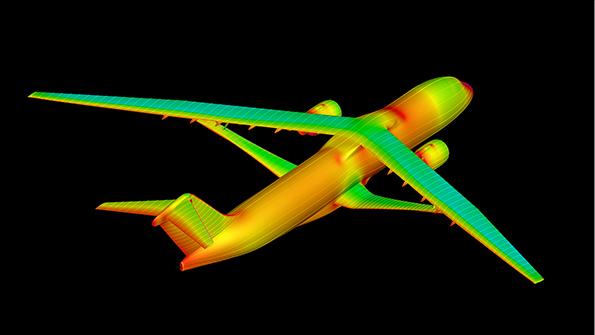Should Airbus And Boeing Develop New Aircraft Based On Existing Tech?

Ask the Editors: The Aviation Week Network invites our readers to submit questions to our editors and analysts. We’ll answer them, and if we can’t we’ll reach out to our wide network of experts for advice.
Does it even make sense to develop brand new aircraft based on existing technology? Should Boeing and Airbus instead concentrate on disrupting themselves?
This question came up during a recent Aviation Week webinar. Panelist Sash Tusa, an aerospace analyst at London-based research firm Agency Partners, answers:
The problem with “disruption” as often understood in the technology, automotive or even space sectors is that these areas have rapid paybacks—certainly relative to the decade or longer cycles of civil aircraft and engines—and relatively high tolerance of product failure and in-service problems. Likely none of those reading this would want to fly in a passenger jet that does not at least meet current levels of safety. This drives certification standards and timescales that may appear inflexible but have stood the test of time, safety and passenger acceptance.
In our view, it is extremely unlikely that either Airbus or Boeing would develop a new model using existing technology—defined as being the design and manufacturing technology used for aircraft currently in production. It is near axiomatic in this industry that any new model needs to offer 15% better economics than the models that it would replace, and such an improvement can only come from major changes and improvements in airframes, engines and systems.
So any new large aircraft (more than 150 seats) launched this decade (for production all through the 2030s and into the 2040s) is likely to need a combination of:
- A new geared turbofan (GTF). While there is only one GTF in service at present, from Pratt & Whitney, both Rolls-Royce (with UltraFan) and GE/CFM are working on their own designs. But a standard turbofan will simply not cut it, especially since any new engine will likely need to be ready to accept 100% synthetic aviation fuels and probably also hydrogen. Our view is that any smaller aircraft (fewer than 100 seats) will need a technology path to electric or hybrid propulsion.
- Extensive use of room-temperature (“cold-cure”) composites, especially for the wings.
- A design and manufacturing process that wholly adopts digital design and supply chain management to reduce cycle times, working capital, labor cost and the current heavy use of over-specialized jigs and tooling.
This may not sound much like disruption to some, but it could produce step changes in economics, production costs and emissions, and hence sociopolitical acceptance of air travel.
Watch the full webinar for free: Commercial Aircraft Development: What’s On The Horizon?





Comments
Existing tech is something you have worked with and that is the only game in town as you can't build an aircraft on all new invented stuff and what is out there anyway?
Aircraft are mature. There are a few possible wing setups (Sugar High or Low) and some cabin differences but they all use composite tech which has been in place for a long time even though a full hull and wing is new application.
MC-21 is using room cured composites.
The reality is that to work and aircraft has to have a wing and it has to be efficient.
We are not going to be beaming passengers for some time. Nothing but a wing and tube of some type works.